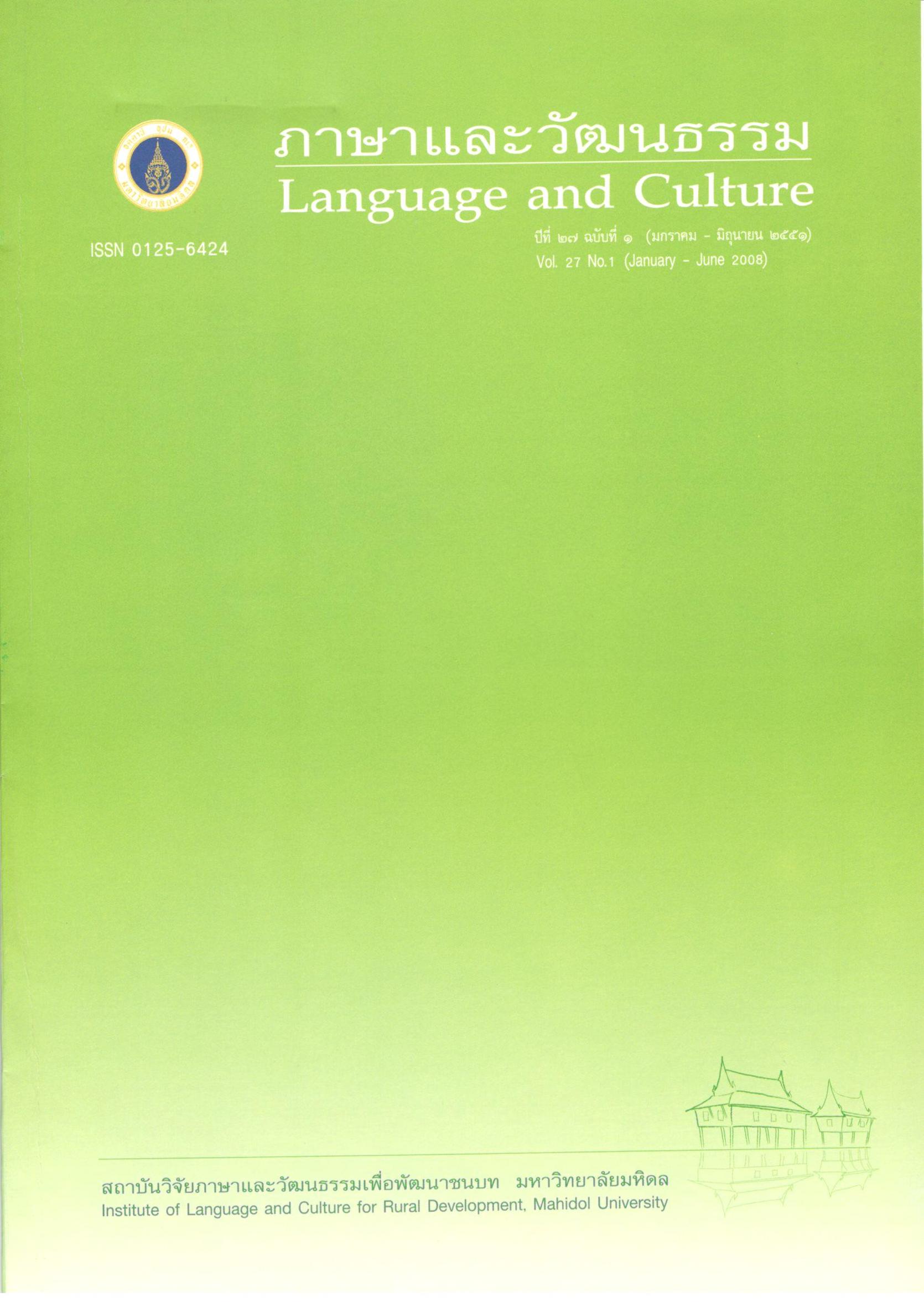Empowering Thai Students Classroom Participation Through Teaching English as an International Language
Main Article Content
Abstract
This paper offers practical and useful guidelines for teaching English to international students with a particular reference to the study of Thai students in a British university. Drawing upon McKay’s (2002) comprehensive theory of English as an International Language (EIL) teaching, this paper examines ways to promote classroom participation among Thai students and create better understanding between Thai and other overseas students. Although there were differences between these students with regard to their first language, ethnicity, cultures of learning, age, academic expectations, and work experience, they spoke the ‘same’ language, i.e., EIL. EIL pedagogy can be applicable to teaching these groups of students because it may enable them to gain confidence in their spoken English in order to participate in academic and social contexts. This approach could also empower them, give them confidence about their spoken English, broaden their perceptions towards linguistic diversity and enable them to claim their right of being speaks of EIL.
Article Details
How to Cite
Nomnian, S. (2014). Empowering Thai Students Classroom Participation Through Teaching English as an International Language. Journal of Language and Culture, 27(1), 41. retrieved from https://so03.tci-thaijo.org/index.php/JLC/article/view/21932
Section
Research Articles
The articles featured in the Journal of Language and Culture (JLC) constitute academic works representing the viewpoints of the respective author(s). It is crucial to note that these opinions do not necessarily reflect those of the Editorial Board.
All articles published in JLC are released under the Creative Commons Attribution 4.0 International License (CC BY 4.0). This license grants permission for unrestricted use, distribution, and reproduction in any medium, provided proper credit is given to the original author(s) and the source.


